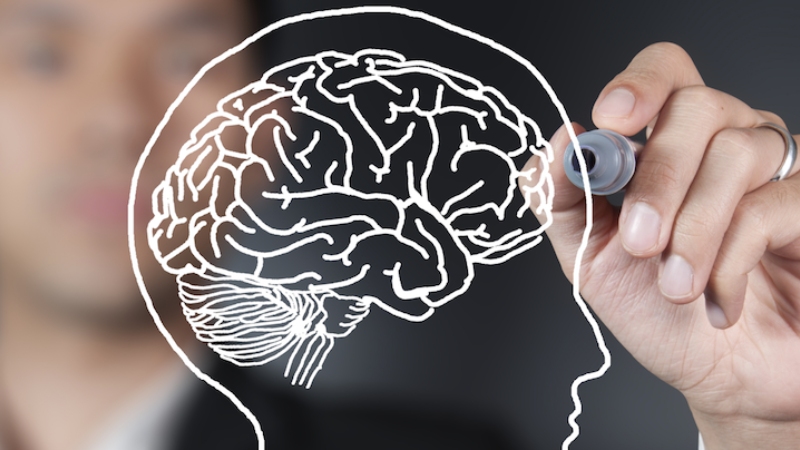Inside the Mind Of Client - How Neuromarketing Is Rewriting the Rules of Marketing

Do You Really Understand What Drives Your Clients?
What truly motivates your clients to say yes? How much of their decision-making happens below the surface—guided by emotions they can’t even articulate?
For decades, marketers have relied on surveys, focus groups, and analytics to understand consumer behavior. But all that data tells only part of the story. Beneath those conscious choices lies a complex web of emotions, memories, and instincts that traditional research can’t quite capture.
Enter neuromarketing—a fast-evolving field at the intersection of neuroscience and marketing. By studying how the brain reacts to ads, packaging, and product experiences, it reveals the why behind consumer behavior. The goal isn’t manipulation; it’s understanding. When brands understand what truly resonates at an emotional level, they can create campaigns that feel more authentic and human.
This article explores the mysteries of the human mind, highlights the main technologies used to analyze brain responses, addresses the ethical and privacy concerns every responsible marketer should consider, and reveals how brain-based marketing is redefining the client experience.
What Is Neuromarketing?
At its core, neuromarketing blends neuroscience, psychology, and marketing to study how people respond to stimuli on a subconscious level. Using advanced tools such as electroencephalography (EEG), functional magnetic resonance imaging (fMRI), and eye-tracking, researchers can measure brain activity and emotional reactions in real-time—long before a consumer can put their feelings into words.
A 2023 report from the University of Chicago estimated the global neuromarketing industry at $3.3 billion, a figure that continues to rise as companies seek deeper, data-driven ways to connect with clients.
The promise is powerful: by analyzing patterns in neural and emotional activity, marketers can uncover what consumers honestly think and feel—insights that go far beyond what people claim in surveys.

The Neuroscience Behind Buying Decisions
Every buying decision begins in the brain. Logic has its role, of course, but most decisions—speedy ones—are emotional at their core. The brain’s reward center, the nucleus accumbens, lights up when something feels satisfying or desirable. Meanwhile, the insula cortex flares up when we feel hesitation or risk—like that tiny pang before spending money.
A famous 2004 study from Stanford University, led by Samuel McClure, made this connection vividly clear. When participants were told which cola they were drinking—Coca-Cola or Pepsi—brain scans revealed spikes in activity within the hippocampus and prefrontal cortex, regions tied to memory and emotion. In short, branding didn’t just influence preference—it literally shaped how the brain responded.
And that’s just one example. Research from Harvard Business School later found that up to 95% of purchase decisions happen subconsciously, guided more by emotion than reason. No wonder marketers are now looking to neuroscience to understand how people truly make choices.
Turning Neural Data into Smarter Strategy
Neural data on its own isn’t enough—it becomes powerful only when combined with marketing analytics and strategy. According to Gartner’s CMO Report (2019–2020), marketing teams allocate roughly 16% of their budgets to analytics, and more than half of that goes to external partners who can interpret complex data patterns.
One experiment in the banking sector offers a glimpse of what’s possible. Researchers tracked how participants interacted with different website layouts using eye-tracking, heat maps, and big data tools like Semrush. The insights were striking: subtle design adjustments led to longer on-site engagement, lower bounce rates, and better conversion outcomes.
This is the new face of marketing—where intuition meets precision, and decisions are guided not by guesswork but by real-time neural and behavioral feedback.
Neuromarketing Techniques and Applications
Neuromarketing techniques measure brain and nervous system responses to understand consumer motivations and optimize marketing effectiveness.
Key Technologies Include:
- Electroencephalography (EEG): Tracks brainwave activity to measure attention and emotional intensity.
- Functional Magnetic Resonance Imaging (fMRI): Maps brain regions activated by marketing stimuli.
- Galvanic Skin Response (GSR): Detects changes in skin conductivity linked to emotional arousal.
- Eye-Tracking: Monitors where and how long a viewer focuses within visual content.
- Facial Coding: Interprets micro-expressions to identify subtle emotional cues in real time.
Case Studies
- IKEA used EEG and eye-tracking to evaluate client reactions to its ads, fine-tuning both visuals and messaging.
- Frito-Lay relied on EEG and GSR to test packaging, leading to a redesign that directly boosted sales.
- Hyundai analyzed consumer interactions with car interiors using EEG and eye-tracking, resulting in more intuitive and satisfying designs.
These techniques offer accurate and in-depth insights into subconscious consumer responses, enabling marketers to develop more persuasive and effective strategies.

Eye-Tracking and Facial Analysis: Decoding Attention and Emotion
Among neuromarketing’s most impactful tools, eye-tracking and facial expression analysis reveal how consumers visually and emotionally engage with content.
Eye-tracking follows gaze patterns and pupil movements, showing precisely which elements capture attention and for how long. Facial coding, powered by AI, interprets micro-expressions—subtle cues of joy, confusion, or surprise—offering objective emotional feedback.
Procter & Gamble used eye-tracking to evaluate TV ad engagement, discovering that bold visual elements dramatically improved viewer attention. Microsoft applied facial analysis to assess user reactions to new products, leading to design refinements that enhanced satisfaction and appeal.
By understanding both where consumers look and how they feel, brands can fine-tune creative execution to maximize engagement.
fMRI and EEG: Mapping the Brain’s Secret Language
Two of the most powerful tools in neuromarketing—fMRI and EEG—offer complementary windows into the brain’s hidden workings.
fMRI measures blood flow to different regions of the brain, revealing which areas light up when people see an ad or product. This helps identify emotional triggers tied to memory, motivation, and pleasure. EEG, on the other hand, measures electrical activity in real time, capturing those fleeting shifts in attention and emotion that happen in milliseconds.
Research from Neuro-Insight found that ads producing stronger EEG signals led to a 23% increase in memory retention and engagement. Meanwhile, fMRI studies consistently show that activity in the amygdala and prefrontal cortex can predict both preference and purchase intent.
According to MarketsandMarkets (2022), the neuromarketing market for fMRI and EEG technologies is projected to surpass $1.2 billion by 2027, growing at nearly 12% annually.
By combining fMRI’s spatial precision with EEG’s real-time sensitivity, marketers gain a more complete picture of how the brain responds—helping them design campaigns that connect not only logically, but emotionally.
Ethical Challenges and the Road Ahead
As neuromarketing technologies advance and gain traction across industries, they present a set of profound ethical challenges, raising essential questions about consumer privacy, autonomy, and the responsible use of neural data.
1. Unconscious Exploitation of Neural Data
One of the most pressing concerns is the potential exploitation of neural data to influence purchasing behavior without conscious awareness. This risk underscores the importance of transparency and informed consent.
According to the Neuromarketing Science & Business Association (NSBA), every study or campaign that leverages brain data must uphold these two principles as non-negotiable foundations of ethical practice.
2. Legal Gaps and Regulatory Oversight
The field currently faces a lack of clear legal frameworks governing the collection and use of neural data, creating a gap between technological innovation and regulatory control.
A 2023 Gartner report revealed that 68% of Chief Marketing Officers (CMOs) expressed concerns about the ethical implications of neuromarketing and its potential impact on brand reputation.
3. Absence of Unified International Legislation
The lack of unified international regulation adds another layer of complexity. As artificial intelligence becomes increasingly intertwined with neuromarketing, the boundaries of acceptable data use continue to blur.
This places a heavy ethical burden on organizations to implement strict internal policies that prioritize consumer welfare and data protection.
A Forrester Research report revealed that 64% of global consumers worry about how companies handle neural data—and that transparency can boost consumer trust by as much as 40%.
Ultimately, respect for privacy and full transparency are not just ethical imperatives—they are strategic necessities. They form the foundation of sustainable trust between brands and consumers in an era where technology knows no cognitive boundaries.

How Neuromarketing Redefines the Client Experience?
Neuromarketing isn’t just changing how brands sell—it’s changing how they connect. By tapping into emotional and cognitive insights, marketers can create experiences that feel more personal, relevant, and emotionally attuned to the consumer’s inner world.
Using technologies like EEG (Electroencephalography) and fMRI (Functional Magnetic Resonance Imaging), brands can now go beyond assumptions and craft interactions that align with genuine emotional responses.
Global innovators such as Amazon and Nike are already using these insights to enhance personalization—tuning recommendations, offers, and messaging to resonate with the individual’s emotional profile. The result isn’t just smarter marketing; it’s more human marketing.
From product discovery to post-purchase satisfaction, neuromarketing helps transform every touchpoint into an experience that reflects empathy, relevance, and scientific precision.
Where Science Meets the Human Spirit
Neuromarketing stands as a bridge between the mind and the heart, between data and humanity.
Throughout this exploration, we’ve seen how neuroscience unveils the hidden mechanisms behind buying decisions, how neural data merges with marketing strategy to generate invaluable insights, and how technologies such as EEG and fMRI illuminate our understanding of human behavior.
At the same time, we’ve examined the ethical and privacy challenges that safeguard the integrity of this discipline.
Let us approach this science with wisdom and transparency—to create marketing experiences that resonate with both the mind and the soul, and to build lasting bridges of trust between brands and their audiences.
This article was prepared by coach Mohamed Ekhtiyar, a coach certified by Goviral